Pesto Sauce
- By Jennifer Segal
- Updated May 29, 2025
- 302 Comments
- Leave a Review

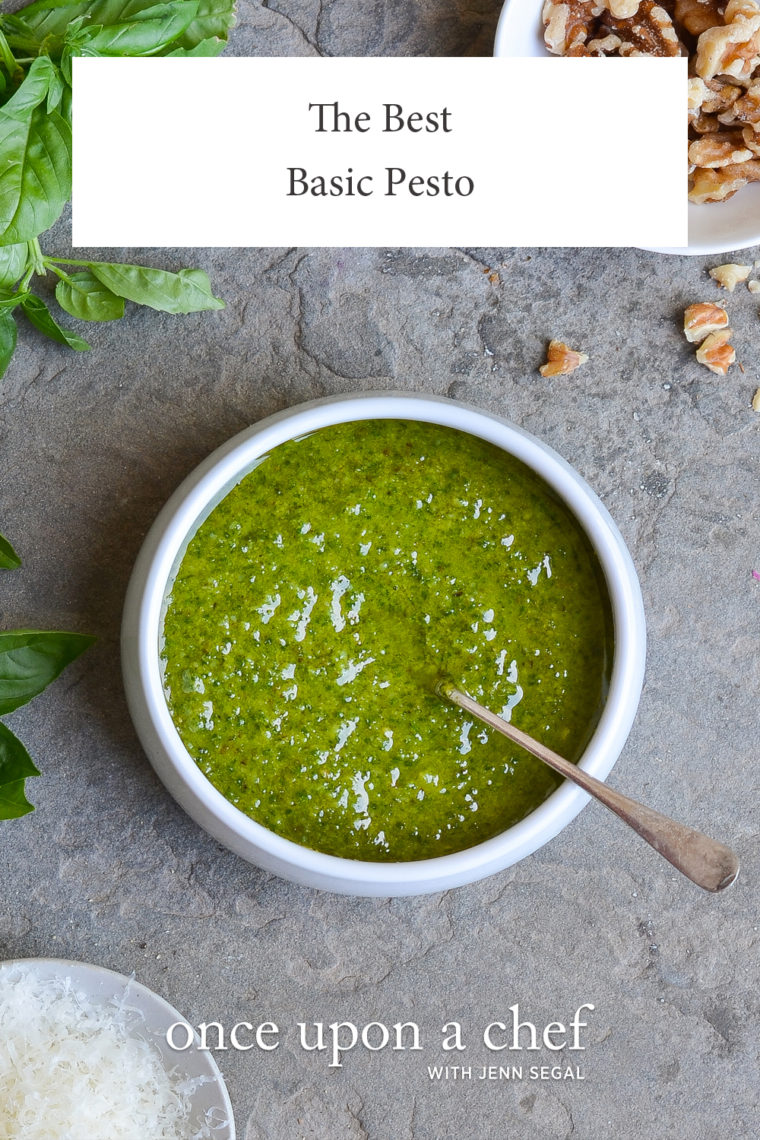
This post may contain affiliate links. Read my full disclosure policy.
Homemade pesto sauce is easy to whip up and delicious on just about everything—from pastas and pizzas to salads and sandwiches.
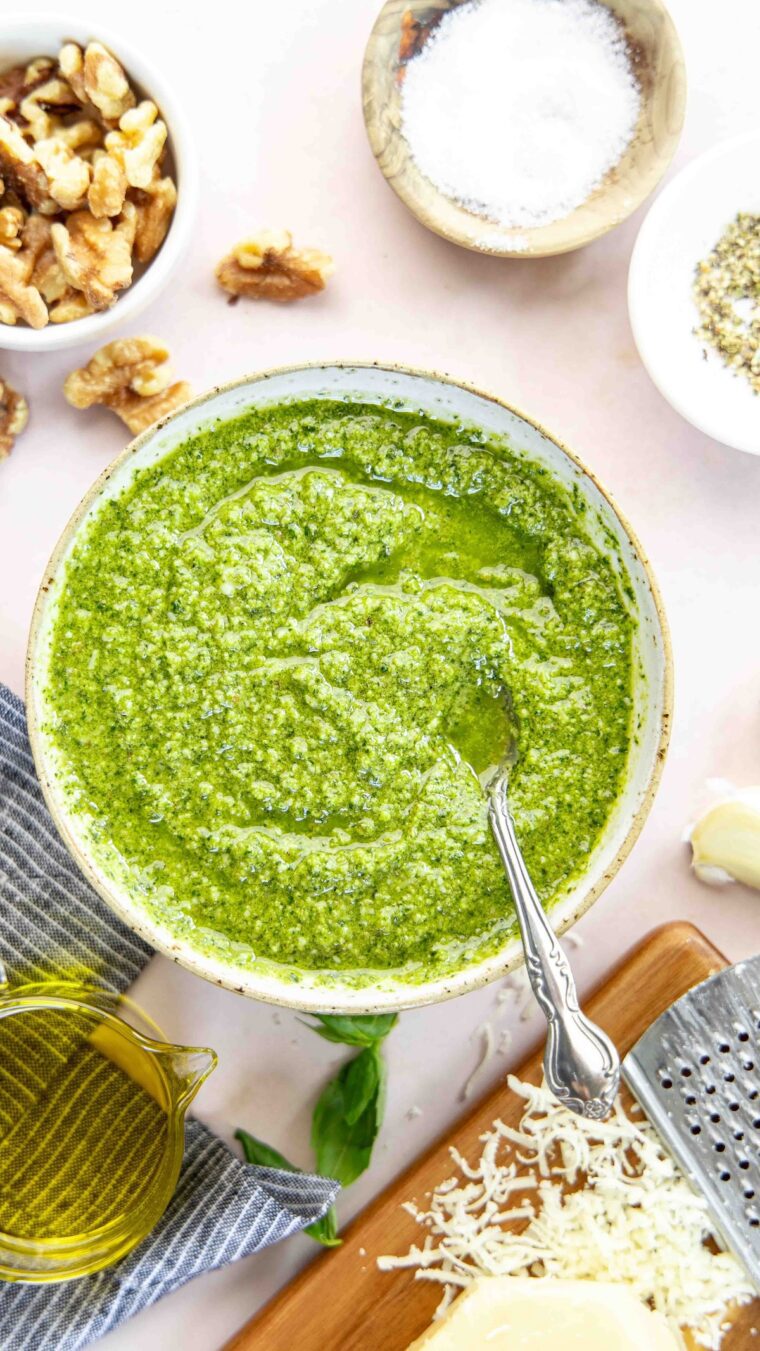
One of my favorite things about summer cooking is stepping out my back door to pick fresh herbs from my potted herb garden. It always amazes me how the tiny seedlings I plant in May grow into more herbs than I can possibly use up by August. When the basil is overflowing, it’s pesto sauce time!
Pesto, or pesto alla Genovese, is a vibrant, garlicky green sauce from Genoa, Italy. While the traditional method uses a mortar and pestle, these days, a food processor makes it a breeze. This versatile sauce is fantastic on everything—from homemade pasta and pizzas to salads, vegetable soup, and sandwiches. What’s even better? It freezes like a dream, so you can enjoy a taste of summer all year long! Try it in my favorite pesto pasta.
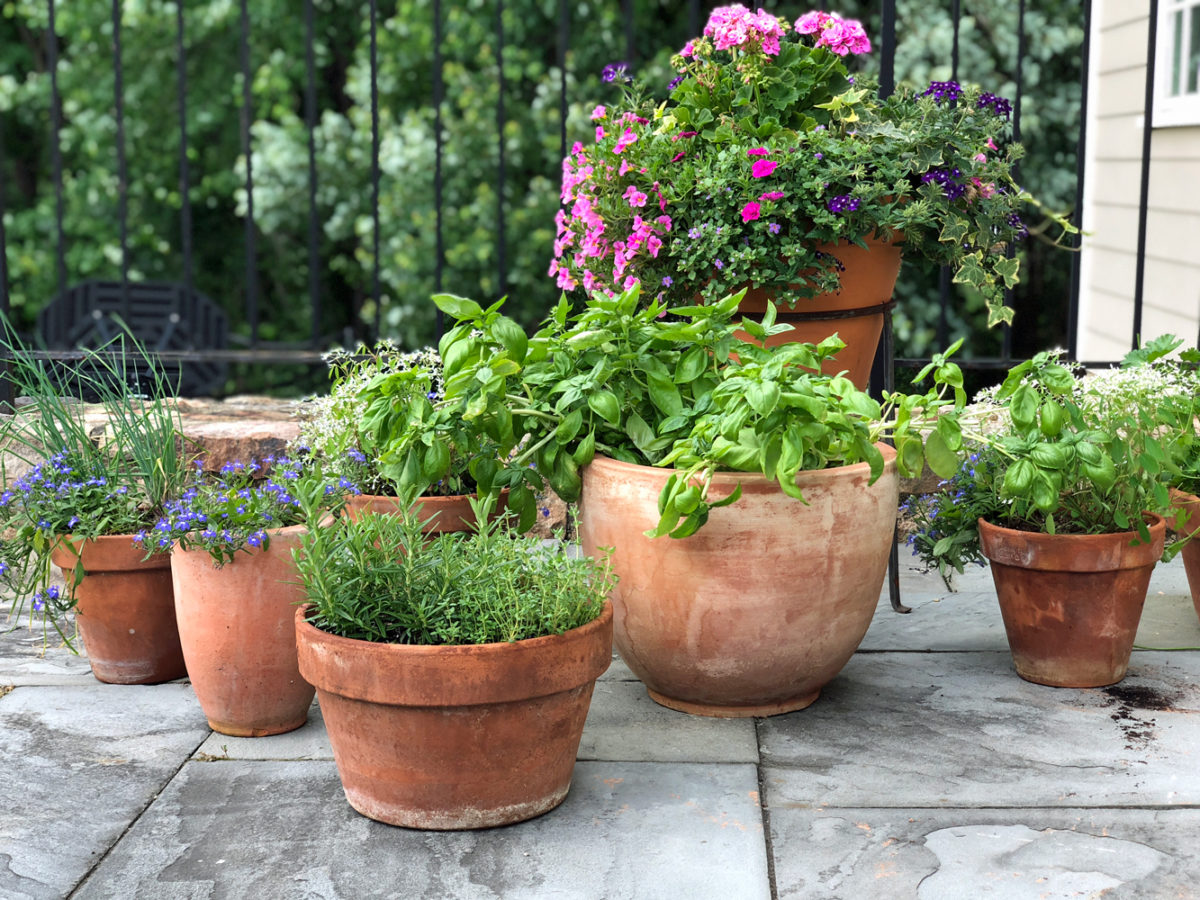
“Simply, my favorite pesto recipe!”
What You’ll Need To Make Pesto Sauce
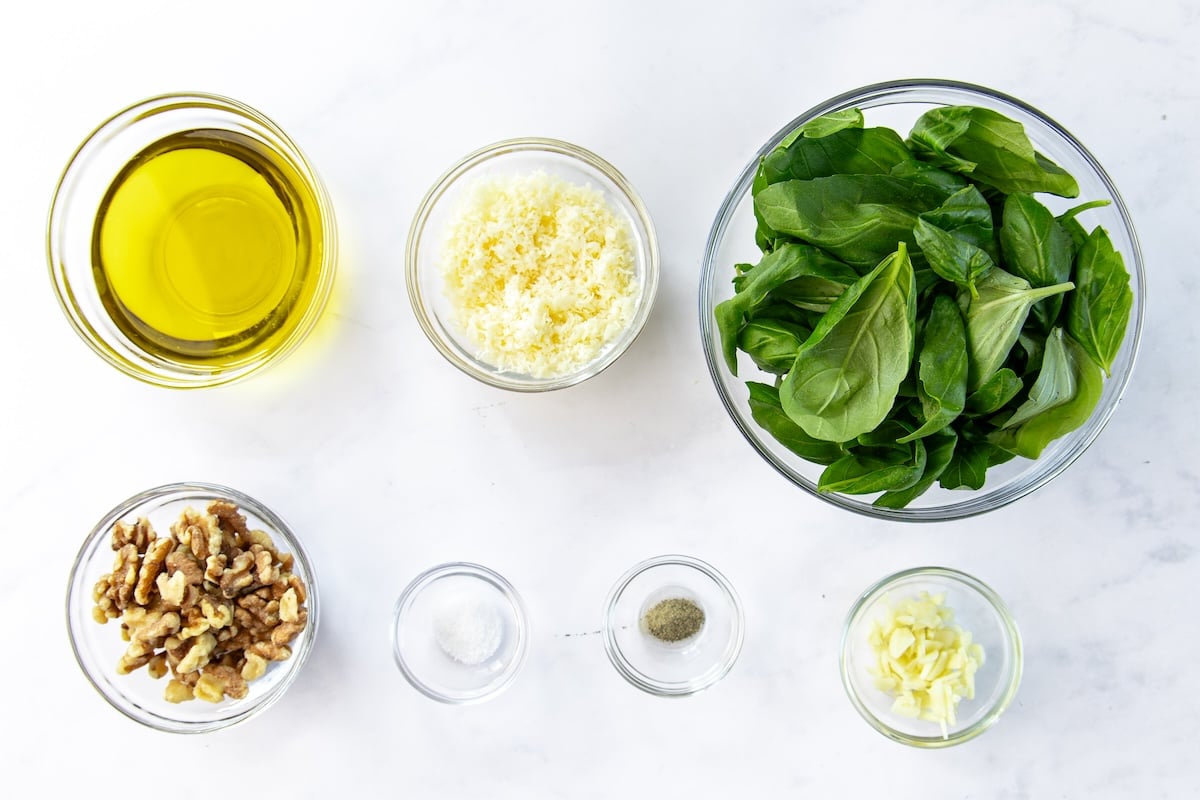
- Walnuts: Add richness, nutty flavor, and help create a creamy texture. I use them instead of traditional pine nuts because they’re more affordable, always in my pantry, and don’t come with the risk of Pine Mouth Syndrome—a strange metallic taste that can linger for weeks after eating certain pine nuts. Almonds, pecans, and pistachios work well too. Pro tip: Toast the nuts in the oven or a dry skillet for a few minutes to deepen their flavor.
- Garlic Cloves: Bring bold, punchy flavor that is key to the flavor of pesto.
- Fresh Basil Leaves: The heart of any classic pesto—fresh, fragrant, and full of vibrant flavor. If your basil is freshly washed, make sure it’s completely dry before adding it to the food processor—excess water can make the pesto too loose or dull the flavor.
- Extra Virgin Olive Oil: Binds everything together and adds smooth, fruity richness.
- Grated Parmigiano-Reggiano: Adds salty, nutty flavor. Always use authentic Parmigiano-Reggiano from Italy—look for the name stamped on the rind or clearly labeled on pre-grated packages. Avoid anything simply labeled “Parmesan” or “Parmesan cheese.”
- Jump to the printable recipe for precise measurements
Step-by-Step Instructions
Step 1: Chop the walnuts and garlic. Add the walnuts and garlic to the bowl of a food processor and pulse until coarsely chopped. Pulsing instead of processing continuously helps prevent the mixture from turning into a paste too early—this gives your pesto better texture.
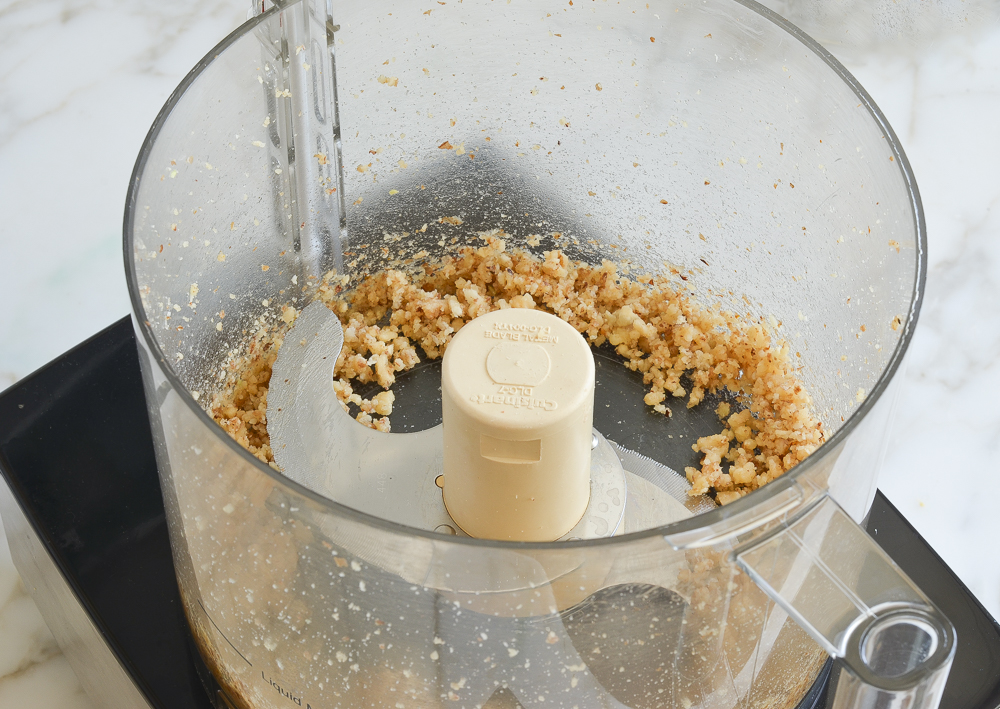
Step 2: Add the basil and seasonings. Toss in the fresh basil leaves, salt, and pepper.
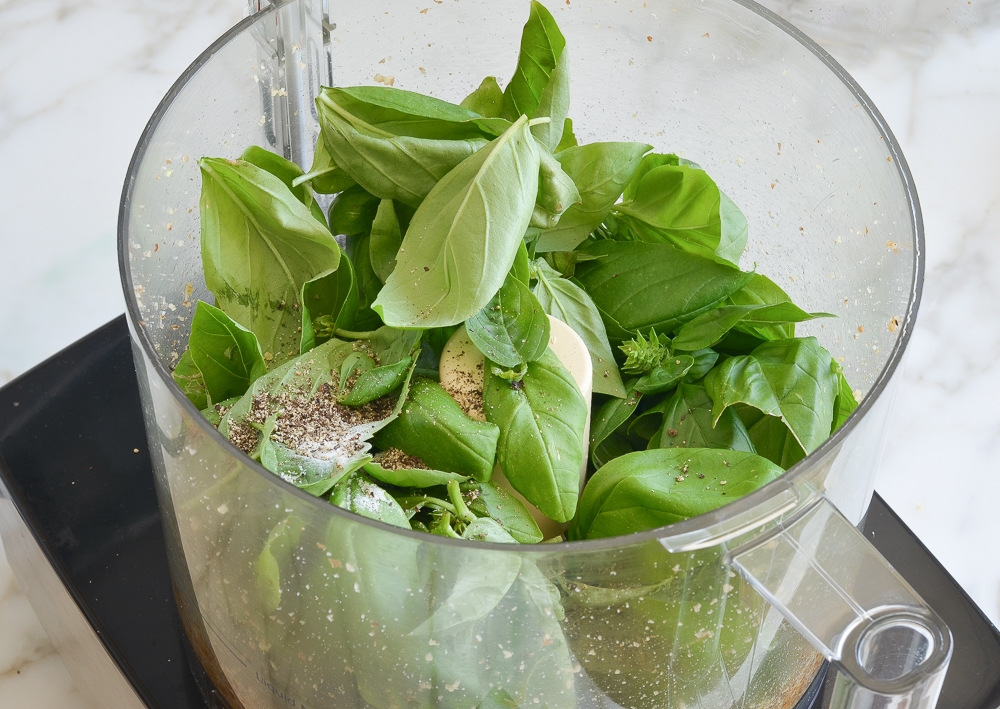
Step 3: Process. Blend until everything is finely chopped.
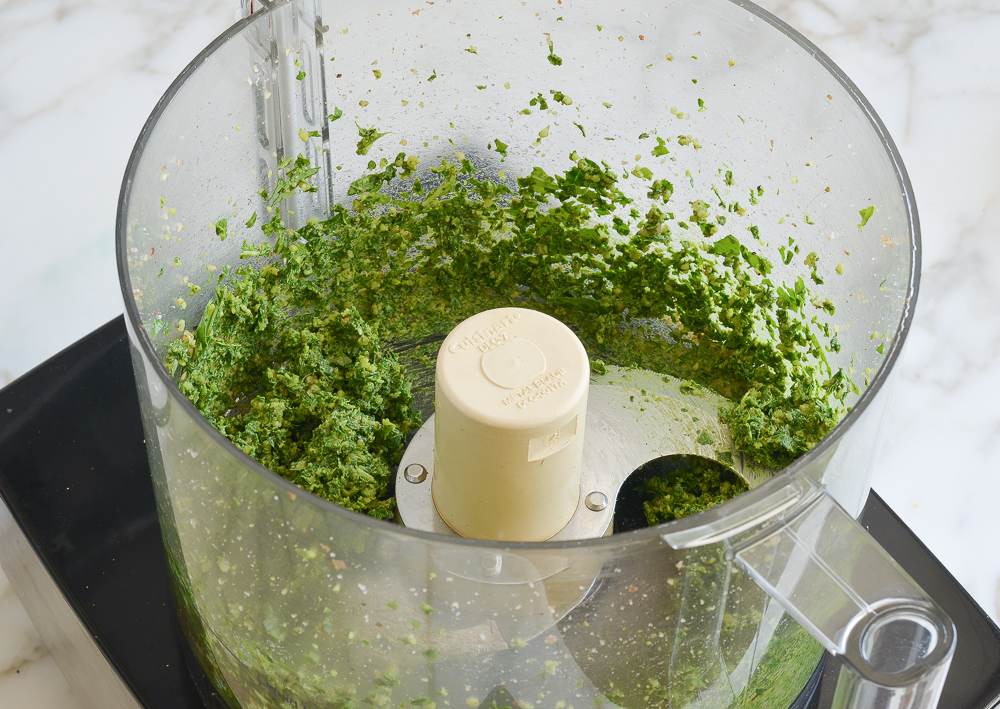
Step 4: Stream in the olive oil. With the machine running, slowly pour the olive oil through the feed tube and let it blend into a sauce. Adding the oil gradually while the machine is running helps emulsify the sauce, giving your pesto a smooth, cohesive consistency.
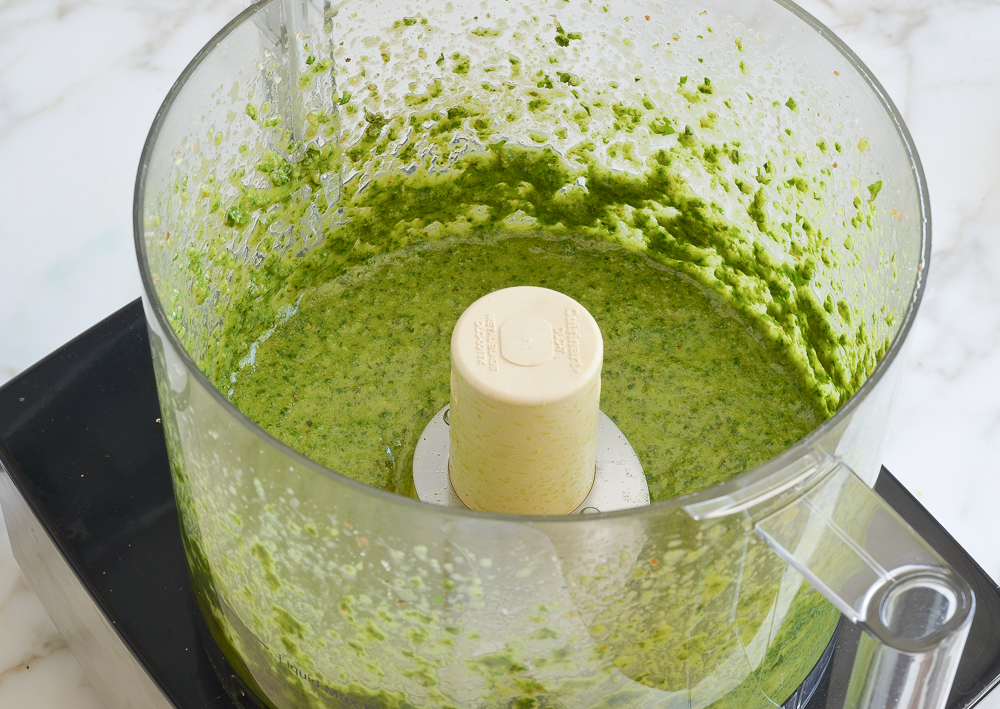
Step 5: Add the cheese. Add the Parmigiano-Reggiano and process again until the cheese is combined with the remainder of the ingredients and the pesto is smooth.
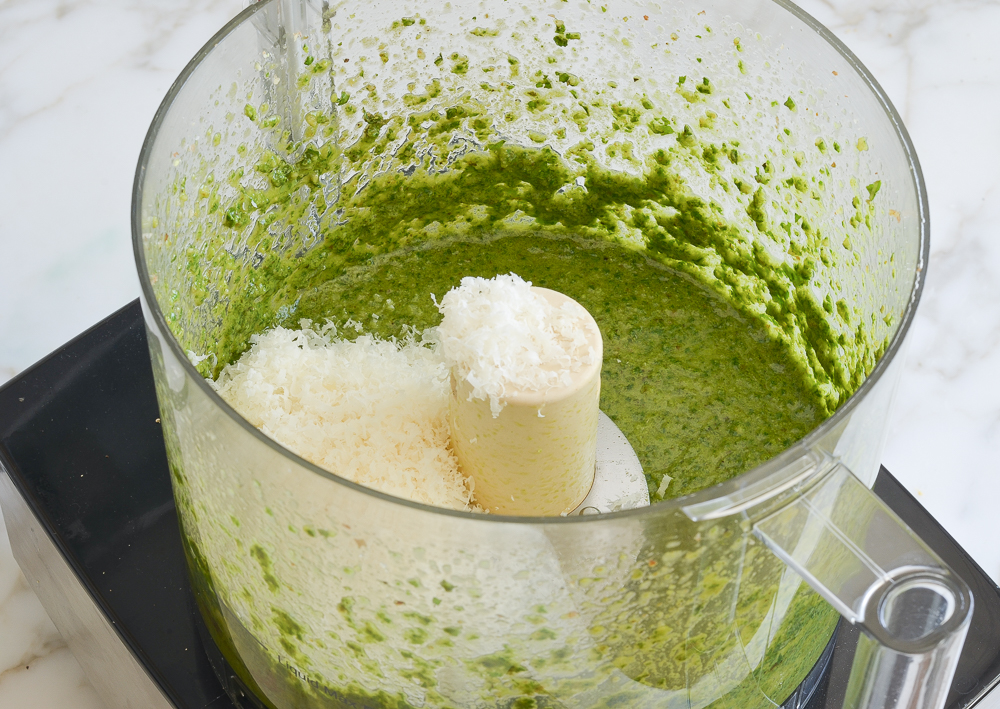
How To Store & Freeze Pesto
Use the pesto immediately or store it in a tightly sealed jar or air-tight plastic container, covered with a thin layer of olive oil (this seals out the air and prevents the sauce from oxidizing, which would turn it an unappetizing brown color). It will keep in the refrigerator for about a week.
Pesto can also be frozen in an airtight container for up to 6 months. I suggest dividing it into the compartments of an ice cube tray and freezing. Once frozen, remove the cubes from the tray and put in a sealable plastic bag or airtight container. You can add the defrosted cubes to pasta salad with pesto, zucchini noodles, pesto pizza, scrambled eggs, sandwiches, or baked potatoes.

Video Tutorial
You May Also Like
The Best Basic Pesto
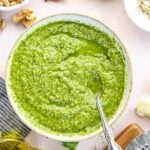
Homemade pesto is easy to make and so much better than store-bought—perfect for pasta, sandwiches, soups, or the freezer.
Ingredients
- ⅓ cup walnuts, toasted if desired (see note)
- 2 large garlic cloves, roughly chopped
- 2 cups packed fresh basil leaves
- ½ teaspoon salt
- ¼ teaspoon ground black pepper
- ⅔ cup extra virgin olive oil
- ½ cup grated Parmigiano-Reggiano
Instructions
- Place the walnuts and garlic in the bowl of a food processor fitted with a steel blade. Process until coarsely chopped, about 10 seconds. Add the basil leaves, salt, and pepper and process until mixture resembles a paste, about 1 minute. With the processor running, slowly pour the olive oil through the feed tube and process until the pesto is thoroughly blended. Add the Parmesan and process a minute more. Use pesto immediately or store in a tightly sealed jar or air-tight plastic container, covered with a thin layer of olive oil (this seals out the air and prevents the pesto from oxidizing, which would turn it an unappetizing brown color). It will keep in the refrigerator for about a week.
- Freezer-Friendly Instructions: Pesto can be frozen in an airtight container for up to 6 months. You can also divide your prepared pesto into the compartments of an ice cube tray and freeze. Once it’s frozen, remove the pesto cubes from the tray and put in a sealable plastic bag or airtight container. You can add the defrosted pesto cubes to soups, pasta dishes, eggs, sandwiches, and potatoes.
- Note: Toasting the walnuts isn't essential, but it brings out their flavor. To toast them, preheat the oven to 350°F. Arrange the walnuts on a baking sheet in a single layer. Bake, checking frequently, until lightly toasted and fragrant, 6 to 8 minutes. Transfer immediately to a plate to cool.
Nutrition Information
Powered by ![]()
- Serving size: 2 Tbsp.
- Calories: 159
- Fat: 17 g
- Saturated fat: 3 g
- Carbohydrates: 1 g
- Sugar: 0 g
- Fiber: 0 g
- Protein: 3 g
- Sodium: 161 mg
- Cholesterol: 4 mg
This website is written and produced for informational purposes only. I am not a certified nutritionist and the nutritional data on this site has not been evaluated or approved by a nutritionist or the Food and Drug Administration. Nutritional information is offered as a courtesy and should not be construed as a guarantee. The data is calculated through an online nutritional calculator, Edamam.com. Although I do my best to provide accurate nutritional information, these figures should be considered estimates only. Varying factors such as product types or brands purchased, natural fluctuations in fresh produce, and the way ingredients are processed change the effective nutritional information in any given recipe. Furthermore, different online calculators provide different results depending on their own nutrition fact sources and algorithms. To obtain the most accurate nutritional information in a given recipe, you should calculate the nutritional information with the actual ingredients used in your recipe, using your preferred nutrition calculator.
Gluten-Free Adaptable Note
To the best of my knowledge, all of the ingredients used in this recipe are gluten-free or widely available in gluten-free versions. There is hidden gluten in many foods; if you're following a gluten-free diet or cooking for someone with gluten allergies, always read the labels of your ingredients to verify that they are gluten-free.
See more recipes:
Comments
Add a Comment Cancel reply
This site uses Akismet to reduce spam. Learn how your comment data is processed.
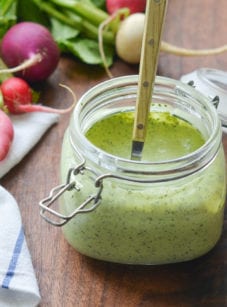
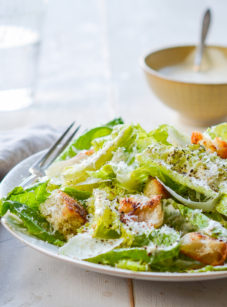

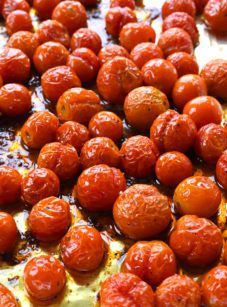
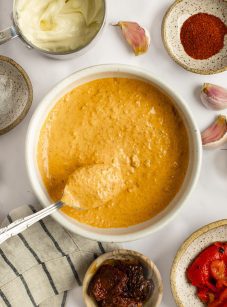

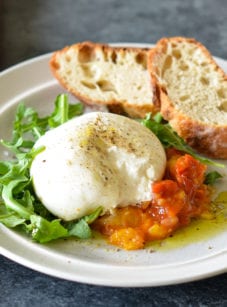
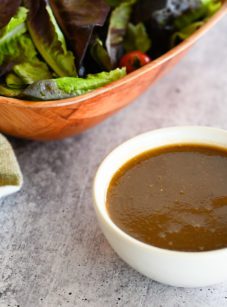
Will try today! Looks fantastic.
Great idea,had it with pasta and chicken yummm!
My local Wegman’s stopped carrying pine nuts in their bulk food aisle because of problems with their supply and cases of pine mouth syndrome being reported.
I’m not a fan of walnuts, but I’ve used almonds and pistachios and it worked wonderfully. As Becca mentioned, blanching whatever greens then shocking them in ice water will keep the color vibrant for days in the fridge.
Thanks for your discription of how. Living in Phoenix AZ, its mid november, and this could be the last batch of the year. Several lessons have been learned, comments are welcomed. Full sun? This year some of my plants were in the pepper bed getting sun only till noon, they did better in the heavy heat, so I made them all morning sun only, until the temps dropped. I add hot peppers, and add sugar to balance the bitterness. Also use a variety of basils, including Thai, Greek, Lemon, and several varieties of Sweet. My freezer is full of pesto cubes. Being end of seaon, this time I will separate varieties.
Tried it since I love so many of your recipes, but must confess… I prefer using pine nuts to walnuts. Love to eat the pesta tossed with orzo… great, fast & easy side!
Everyone should know about this tip. If you don’t plan to use all your pesto quickly, i.e. freezing it, blanching the basil leaves for about 30 seconds in boiling water will keep the pesto a vibrant green color. Before blending the pesto ingredients, blanch the basil leaves, take them out of the boiling water and run them under cool water to stop the cooking and then add to the food processor as the recipe directs. This really works and keeps pesto a nice fresh green color, even after freezing and defrosting.
I never liked pesto, but this recipe has changed my mind. Even my boys will eat it over pasta. Wonderful recipe–thank you!!
Pesto is one of my wife’s favorite flavors. This came out fantastic. We can’t wait to use it on different foods.
This turned out great, thank you for sharing.
Walnuts are a great sub. for pignoli. I’m going to have to try this!!